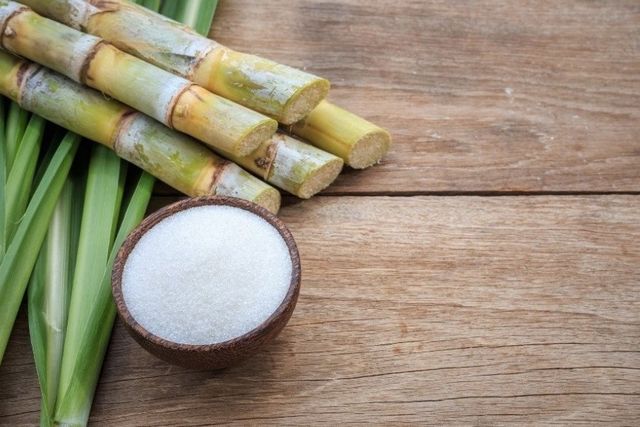Beet Sugar vs Cane: A Guide to Choosing the Best Option for Your Recipes
Beet Sugar vs Cane: A Guide to Choosing the Best Option for Your Recipes
Blog Article
Discovering Beet Sugar Vs Walking Stick: Nutritional Benefits and Culinary Makes Use Of
The comparison between beetroot sugar and walking cane sugar extends past plain preference and structure, disclosing elaborate nutritional accounts and culinary applications that merit mindful evaluation. As we discover the nuances of these two sugars, it becomes clear that the ramifications of their use are a lot more profound than one may at first assume.
Summary of Beet Sugar
Although both beet sugar and walking stick sugar offer similar features in cooking applications, beet sugar is acquired especially from the sugar beetroot plant (Beta vulgaris), an origin veggie cultivated in temperate environments. This procedure starts with the harvesting of sugar beetroots, which are then cleaned, cut, and subjected to removal techniques to generate sugar-rich juice (beet sugar vs cane). The juice goes through purification and condensation, causing the granulated sugar typically made use of in industries and houses
Nutritionally, beetroot sugar is chemically the same to walking cane sugar, both mainly consisting of sucrose. However, beetroot sugar manufacturing has a tendency to have a reduced ecological influence, as sugar beets require less water and can be grown in diverse agricultural problems. Furthermore, the cultivation of sugar beetroots can contribute to crop turning practices, enhancing soil wellness.
Beetroot sugar typically includes trace quantities of vitamins and minerals, including calcium and potassium, although these are minimal in typical consumption. In cooking and baking, beetroot sugar carries out equivalently to its walking cane equivalent, making it a functional sugar. Its neutral taste profile enables it to be flawlessly integrated into various dishes without altering the intended taste of the end product.
Introduction of Walking Stick Sugar
Walking stick sugar, originated from the sugarcane plant (Saccharum officinarum), makes up approximately 70% of international sugar manufacturing. This versatile sweetener is cultivated in subtropical and exotic areas, with major producers consisting of Brazil, India, and China. The extraction procedure entails crushing the sugarcane stalks to release the juice, which is after that made clear, evaporated, and taken shape to create raw cane sugar.
Cane sugar is defined by its penalty, white granules and is typically found in both granulated and powdered forms. Its flavor profile is commonly referred to as wonderful and tidy, making it appropriate for a vast array of culinary applications, from preparing and baking to sweetening beverages.
In addition to its culinary uses, walking cane sugar also acts as a preservative in jams and jellies, in addition to a fermentation representative in the manufacturing of alcohols. The sugar is frequently processed right into various products, consisting of molasses, brown sugar, and fluid sugar, each offering distinct qualities that can enhance various recipes. Generally, walking stick sugar remains a staple component in cooking areas around the globe, emphasizing its relevance in both culinary traditions and modern gastronomy.
Nutritional Comparison
When contrasting beetroot sugar and walking cane sugar, it is vital to evaluate their dietary profiles to comprehend their influence on health. Both kinds of sugar are mostly composed of sucrose, which is a disaccharide composed of glucose and fructose. This means that, in terms of calorie material, they are virtually similar, supplying around 16 calories per teaspoon.
However, there are refined distinctions in their handling and mineral web content. Beetroot sugar is typically refined using bone char, which may not appropriate for vegans and vegetarians, while cane sugar can be more straightforwardly improved. In terms of trace minerals, cane sugar might retain somewhat more magnesium, calcium, and potassium because of less substantial handling, though these amounts are minimal compared to everyday recommended consumption.
Additionally, both sugars add to the exact same health dangers when consumed in too much amounts, such as excessive weight, kind 2 diabetes mellitus, and dental problems. Eventually, the selection in between beetroot and cane sugar may hinge extra on individual preference or dietary limitations instead of substantial differences in dietary worth. Comprehending these subtleties can aid consumers in making informed dietary options.

Culinary Use Beet Sugar
Beet sugar, a flexible sugar originated from sugar beets, locates countless applications in cooking techniques - beet sugar vs cane. Its improved crystals dissolve easily, making it a perfect ingredient for cooking, food preparation, and drink preparation. In the realm of baking, beetroot sugar contributes to moisture retention and browning, boosting the texture and taste of cakes, pastries, and cookies
Additionally, its neutral flavor account allows it to blend perfectly into various recipes without overpowering various other active ingredients, making it appropriate for both full-flavored and sweet dishes. Beetroot sugar can also be utilized in sauces, marinades, and dressings, where it balances level of acidity and improves the general preference.
In beverages, beetroot sugar is generally utilized to sweeten tea, coffee, and mixed drinks, Continue giving a regular sweetness that complements diverse flavor accounts (beet sugar vs cane). Additionally, it acts as a chemical in jams and jellies, ensuring a steady item with boosted rack life
Culinary Use Walking Stick Sugar
Sweet taste is a basic element of numerous cooking developments, and walking stick sugar plays an essential function in accomplishing that balance. Walking stick sugar enhances tastes in check this treats, giving the sweet taste vital for cookies, pastries, and cakes.
In mouthwatering meals, walking stick sugar can stabilize level of acidity and resentment, improving the overall taste profile. It is generally used in sauces and sauces, where it helps to produce an unified blend of sweet, salted, and umami notes. Additionally, walking stick sugar is an essential ingredient in preserving fruits, as it serves as an all-natural chemical, inhibiting microbial development.
In drinks, walking cane sugar is frequently liked for sweetening mixed drinks, sodas, and teas, enabling a tidy, pure sweetness. Its adaptability makes it a staple in both home kitchen areas and expert cooking setups, showcasing its value in attaining cooking quality.
Conclusion

The comparison between beetroot sugar and walking cane sugar extends beyond simple preference and texture, revealing intricate dietary accounts and cooking applications that merit cautious exam.Although both beet sugar and walking stick sugar offer similar features in culinary applications, beetroot sugar is acquired particularly a knockout post from the sugar beet plant (Beta vulgaris), an origin vegetable cultivated in pleasant climates. Beetroot sugar manufacturing has a tendency to have a lower environmental impact, as sugar beetroots call for much less water and can be expanded in diverse farming conditions. The sugar is typically refined right into different products, consisting of molasses, brown sugar, and liquid sugar, each offering distinct attributes that can boost different recipes.Beet sugar, a flexible sugar derived from sugar beets, finds various applications in culinary methods.
Report this page